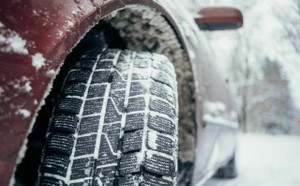The differences between drivetrains
By Kijiji Autos
Acronyms can often make the car-buying experience a challenge, especially when it comes to distinguishing between AWD, FWD, RWD, and 4WD. These codes relate to how car manufacturers and dealers refer to the systems that regulate power from the engine to the wheels of a motor vehicle.
While it can be helpful to know which each acronym stands for, understanding their individual benefits and differences will transform you into an educated buyer. This will allow you to think about how and where you drive (do you enjoy cruising across major roadways, or prefer taking the unpaved, less traveled roads?) and what system is ultimately right for you.
FWD: Front-Wheel Drive
Front-wheel drive systems offer two distinct benefits to their owners: Space and fuel economy. Most, but not all, minivans use a front-wheel drive system for this reason. It jams all the hardware into a single area – engine, transmission, final drive gears, differential – to free up space within the vehicle. Lighter vehicles will also have improved fuel efficiency.
Another added benefit of front-wheel drive systems is the car’s traction during inclement weather. These cars , with or without ice, so you gain some added peace of mind when driving a FWD car during the rough winter months.
RWD: Rear-Wheel Drive
Rear-wheel drive systems place the power in the back wheels of a vehicle. The front wheels provide direction, but the back wheels propel the vehicle forward. You’re most likely to find this system in trucks, since they need extra power in the back wheels when there is extra weight in the truck bed. Heavier luxury vehicles often stock rear-wheel drive systems as well, to handle the enhanced weight of the car.
Performance and race cars also use rear-wheel drive systems to provide increased traction at high speeds. This puts the driver in a battle against the elements when rain or snow roll into town. Since the front wheels aren’t weighted down the same as the rear wheels, the driver potentially runs the risk of fishtailing. Drivers of RWD vehicles can combat these issues by practicing safe driving techniques, such as maintaining slower speeds, turning without accelerating, and outfitting the vehicle with winter tires.
4WD: Four-Wheel Drive
Four-wheel drive systems present a great solution for driving through less-than-stellar terrain or conditions. Deep snow, muddy trails, and icy roads make for the perfect conditions to engage a four-wheel drive system (vehicles with four-wheel drive capabilities need to enable the mode for it to function appropriately). This happens with either a lever, button-push, or the car enabling it automatically.
Four-wheel drive vehicles stay in a rear-wheel drive state until the four-wheel drive system is activated (either with a lever, button, or when the vehicle enables it automatically) to regulate the power across all four wheels. This mode doesn’t help all the time. In fact, driving with it during perfect conditions can cause significant damage to the vehicle’s mechanics and tires.
AWD: All-Wheel Drive
All-wheel drive systems provide a solution for those wanting better traction but don’t want to worry about engaging or disengaging a system. Most all-wheel drive vehicles are toggled on permanently. Computer-reading sensors in each wheel determine the correct amount of power required for any condition. This process, known as torque vectoring, allows all-wheel drive vehicles to have excellent grip and control during all types of road conditions.This does increase the weight of vehicles sporting all-wheel drive systems, which negatively impacts fuel economy. And even though they’re great at handling whatever the elements throw at them while on the road, this still isn’t the right vehicle to test in extreme off-road scenarios.
Ready to Drive
Most drivers are just fine taking advantage of the fuel economy and performance power of a front-wheel drive vehicle. Still, you’ll need to evaluate where and how you drive to determine the best system for you.
Now that you know more about the different systems, you can put your acronym knowledge to good use when searching for the perfect new or used vehicle online or in the showroom.
Easily find your next ride on Kijiji Autos
Search nowThe most affordable electric cars in Canada in 2023
Looking for a budget-friendly electric car? Discover the 12 most affordable electric cars for sale in Canada on Kijiji Autos. Plus, we answer your FAQs about the costs of driving, charging and insuring an electric car.2023 Mazda 3 GX vs GS: What’s The Difference?
The 2023 Mazda 3 is a refined compact car with styling and performance that give it a upmarket feel. In this article we'll break down the differences between the Mazda 3's GS and GX trim packages to help you decide which features you'd want to take or leave, as well as what they'd cost you. Click on the listings on our Search Results page to discover the Mazda 3 GX and GS for sale near you.FWD vs AWD: What’s the Difference & What’s Right For You?
The main difference between FWD and AWD vehicles is the number of wheels their engines are able to send power to. This article will tell you everything you need to know about FWD vs. AWD and help you decide which is right for you.Coupe vs Sedan: What’s The Difference?
Coupes and sedans can both provide you with practical, fuel efficient transport that can also be fun to drive. Both body styles have their advantages and drawbacks depending on what you’re looking for in a new vehicle. In this article we’ll examine the differences between coupes and sedans and define both vehicles with examples.Is it hard to drive an SUV?
if you're stopping yourself from buying an SUV because you're afraid it's more difficult to maneuver, you'll be pleased to know that's not the case. In fact, first-time drivers will find driving an SUV no more challenging than smaller vehicles like sedans, as long as they follow a few tips outlined below.Top 11 SUVs for Winter Driving in Canada
SUVs are some of the best-suited vehicles for winter conditions with a wealth of standard and available features to help you stay in control and get where you're going when the temperature plummets below zero. Here are 11 of the top SUVs for winter driving.Sedan vs SUV: Which one is right for you?
Sedans and SUVs are two of the most popular kinds of vehicle on the market today. This article will examine the different characteristics of sedans and SUVs, highlighting the areas in which each shines and where their shortcomings lie to help you make the right choice on your next vehicle.Your Guide to Hatchback Cars in Canada
Hatchback cars are defined by their tailgate, which raises up to give access to the rear cargo area. Hatchbacks can feature two or four doors plus the tailgate, and follow what's known as a two-box design. The engine compartment at the front of the car makes up one box, with the second comprising the passenger cabin and cargo area.10 affordable convertible cars in Canada
It may be cliché, but there honestly is nothing like feeling the wind in your hair as you cruise down the highway in a convertible with the top down. Here, we explore 10 affordable convertible cars (in no particular order) to inspire you to dive into Kijiji Autos' listings and find your next vehicle.10 popular full size vans for your family or business
Whether you need to transport people or goods, a large van can be a practical choice. You might be wondering who makes full size vans or what is the best full size for family. Here are 10 of the top big vans for sale in Canada in 2022, in no particular order:









